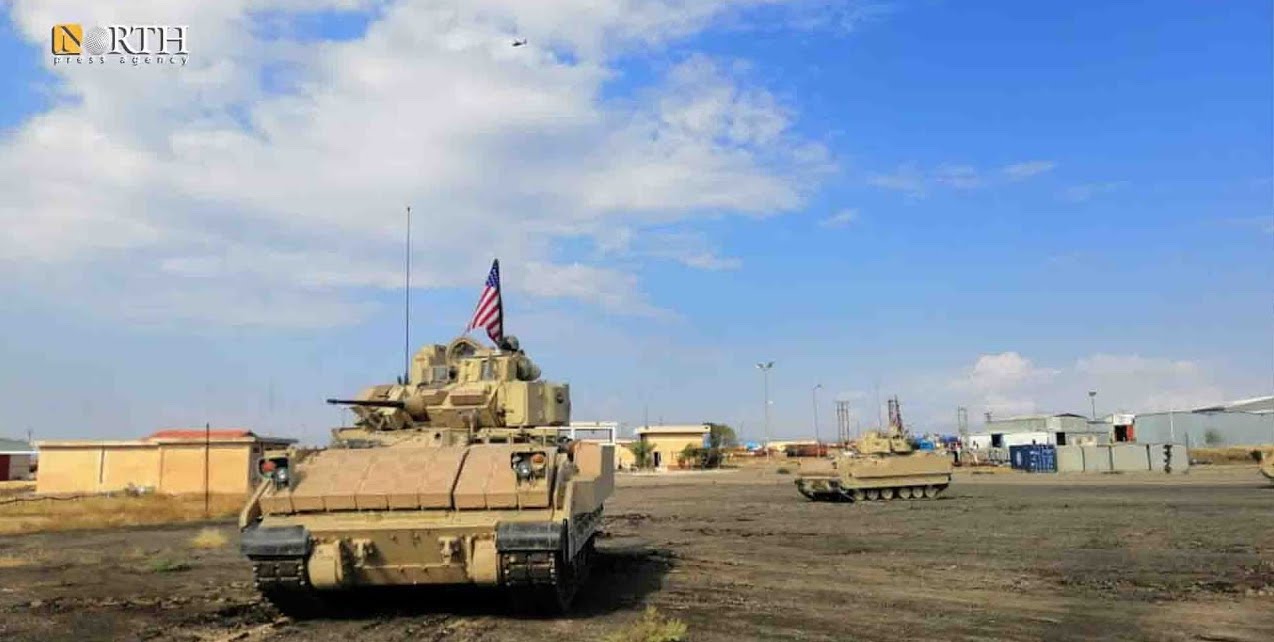
On Jan. 22, two days after President Biden’s inauguration, a large convoy of US military vehicles reportedly entered northern Syria from across the Iraqi border. The convoy, consisting of some 40 trucks and armored vehicles accompanied by helicopters, was reported by Syrian state news agency SANA, citing sources on the ground. (i24News, Israel) The putative sighting has raised speculation that Biden is reversing the withdrawal of US troops from northern Syria, which had been ordered by Trump in October 2019.
The report comes as the uneasy peace between Kurdish forces in the region and the Assad dictatorship appears to be breaking down. The US withdrawal provided a “green light” for Turkish intervention against the Kurdish autonomous administration in northern Syria, effectively forcing the Kurds to cut a separate peace with the Assad regime. But the regime’s refusal to recognize Kurdish autonomy remained an obstacle to any formal peace between the two sides.
On Jan. 16, clashes broke out in the town of Qamishli between the Kurdish Asayish militia and the National Defense Forces, a paramilitary extension of the regime’s Syrian Arab Army. Each side accused the other of carrying out arrests of its local followers and leadership, in violation of the de facto power-sharing arrangement in Qamishli. (VOA)
The Kurdish autonomous leadership, officially the Autonomous Administration of North & East Syria (AANES), meanwhile sent a letter to the Secretary-General of the United Nations repudiating claims reportedly made to the UN by the Assad regime. The regime statement apparently sought to implicate the Kurdish-led Syrian Democratic Forces (SDF) as complicit in ongoing Israeli air-strikes on Syrian territory (which have almost exclusively targeted Iranian forces). On Jan. 13, Israel allegedly carried out strikes uncharacteristically deep in Syria‚ in Deir ez-Zor province—in or near territory controlled by the SDF. The AANES statement denied any SDF responsibility in the Israeli strikes, and accused the regime of “hypothetical conspiracies.” (North Press Agency, Anadolu Agency)
The Kurdish leadership also expressed a desire to rebuild unity with the Syrian opposition to the Assad regime. The Kurdish movement and Arab-led opposition have been effectively pitted against each other by Great Power intrigues since their period of formal unity some six years ago. Ilham Ahmed, chair of the Syrian Democratic Council (SDC, the civilian arm of the SDF), said on Jan. 17 that the SDC and AANES are planning to convene a national conference of all Syrian opposition forces this year. (North Press Agency)
As a seeming step toward this, last August the SDC signed a memorandum of understanding in Moscow with the Popular Will Party, a formation of the Syrian left led by Qadri Jamil (a former deputy pime minister who ostensibly broke with the regime upon outbreak of the Syrian Revolution in 2011). The memorandum called for a political solution to the Syrian crisis in accordance with UN Security Council Resolution 2254, and for the drafting of a new Syrian constitution.
But the head of the opposition Syrian Interim Government (linked to the Istanbul-based National Coalition of Syrian Revolutionary & Opposition Forces) condemned the pact, and implied that the Popular Will Party is a pseudo-opposition group still beholden to the regime. “This agreement was reached with the sponsorship and mediation of Russia that has waged war and carried out massacres against the Syrian people,” Abdurrahman Mustafa told Turkey’s official Anadolu Agency. (Daily Sabah)
Indeed, even in criticizing Assad, the Kurdish leadership also seemed to hold out the possibility of rebuilding unity with the regime. North Press Agency, media arm of the AANES, quoted Jamal Sheikh Baqi, leader of the Syrian Kurdish Democratic Party (KDPS), a formation which has traditionally been at odds with the autonomous administration, but now appears to be cooperating with it. Sheikh Baqi said that in rebuffing peace with the Kurds, Assad was guilty of “abandonment of a third of the country,” and complicit in the “partition of Syria.” He recalled Assad’s 2015 “Useful Syria” speech, which posed the regime retreating to the most populous, developed and economically central areas of the country (Damascus, Aleppo, Homs, Hama, and the coastal zone), while abandoning marginal areas such as the heavily Kurdish northeast.
The war in Syria has effectively been on hold since the COVID-19 pandemic hit last year. If a renewed conflagration seems imminent in the northeast, it is still uncertain how the lines will be drawn. Biden may want to have US forces well-positioned to control what territory and resources may be up for grabs in a carve-up of Syrian territory.
Photo: North Press Agency





New Israeli air-strikes on Syria
The second set of Israeli strikes in six days on pro-Assad targets has killed at least two troops near Damascus. Israeli missiles fell on bases on Oct. 30 in a rare daytime raid. Israel has for years intermittently targeted bases housing Iranian personnel in the Damascus suburbs. (EA Worldview)